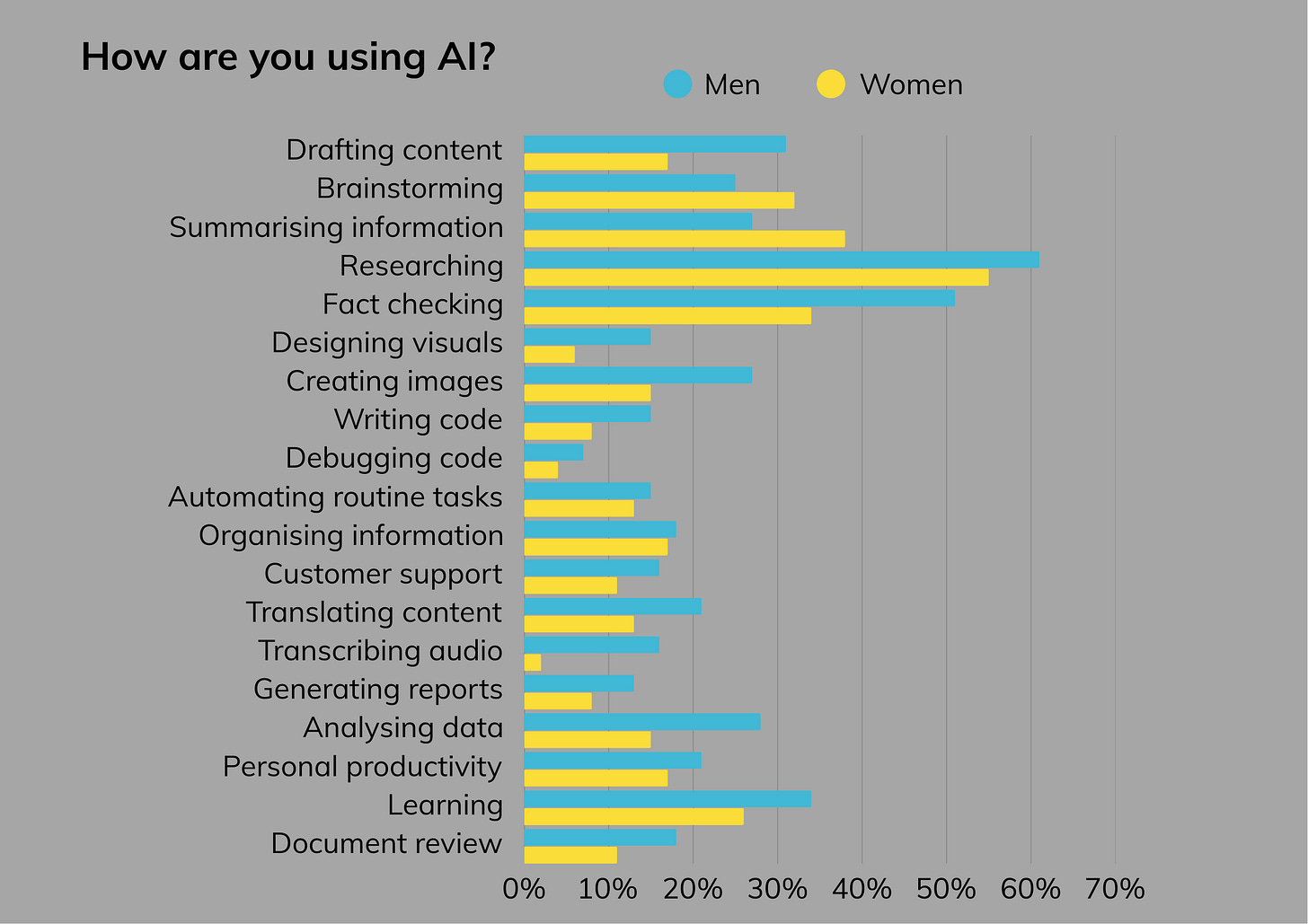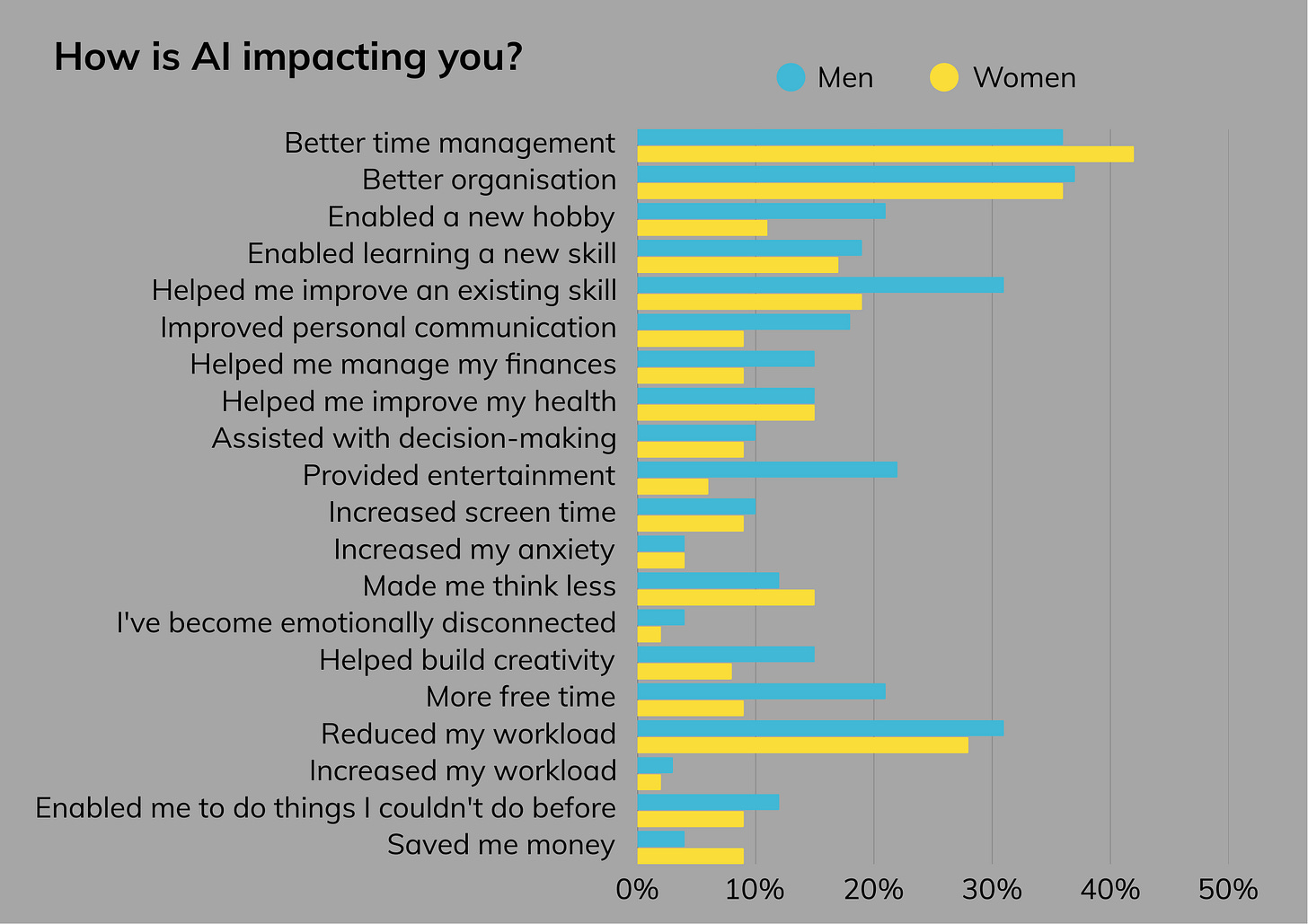Are women getting left behind in the AI adoption race?
Yes. And we need to act now.
Last week I conducted a survey of 120 UK workers about how they’re using AI. And I uncovered a gender gap.
It might be small, but it’s significant. Because this isn’t a tech design problem. It’s a compounding advantage problem.
It seems that men are experimenting more, building more, and reporting more tangible gains. And I don’t think this is because they’re more capable, but rather because they got there first. And in an AI-enabled world, early engagement often leads to exponential return
Confidence is fuelling the gap. And also reinforcing it
On average, men rated their confidence with AI tools at 7 out of 10. For women, it was 6. That might sound like a small difference, but it’s already playing out in behaviour.
Men are using AI more for drafting content, generating images, analysing data, and writing code. These are the kinds of uses that generate visible output, which in turn reinforces confidence. Try → produce → repeat.
But confidence doesn’t just predict usage - it grows with it. So a one-point difference today might become a three-point difference tomorrow if we don’t close the loop.
Women are using AI in ways that matter.
Women in the survey were more likely to use AI for summarising, brainstorming, and managing time. In fact, they were more likely than men to say that AI has helped them with time management (42% vs 36%).
Men, on the other hand, were more likely to have used AI to enable a new hobby (21% of men v 11% of women), improve an existing skill (31% v 19%) or for entertainment (22% v 6% of women).
The hallucination gap is a red flag
One stat stood out more than any other: 22% of women said they don’t know what AI hallucinations are, compared to just 9% of men.
This isn’t just about lingo. Hallucinations - when AI generates plausible but false information - are a core failure mode. If nearly a quarter of women aren’t familiar with that risk, it suggests a significant literacy gap.
That matters. Because when users don’t know what to watch out for, they’re less likely to catch errors, challenge outputs, or develop healthy scepticism - all of which are foundational to safe, effective AI use.
Is this exposure bias? If so, we need to act fast
We don’t know for sure what’s driving these gaps - whether it’s confidence, time, access, or simple exposure. But if men are getting more hands-on time with the tools, and women are entering the space more cautiously, then every week that passes is widening the gap.
This isn’t about inclusion for the sake of optics. It’s about ensuring women aren’t left behind as AI becomes embedded in hiring, productivity, learning, and decision-making. If AI is shaping the future of work, then AI literacy - not just usage - becomes a lever of economic power.
Small gaps become structural fast
Right now, the differences are subtle. But so were early gender gaps in coding, data science, and STEM. We’ve seen what happens when early advantage goes unchallenged: it becomes the default.
The good news is that this gap is still changeable. But it won’t fix itself. It will take visibility, intentional upskilling, and a deliberate effort to bring more women into the early adopter tier - not just as users, but as questioners, testers, and leaders.
Because in an AI-driven world, falling behind isn’t about missing the tech. It’s about missing the next wave of opportunity.
Do you know any women who are ready to become AI-ready? Invite them to sign up to the waitlist for my AI coaching community.




